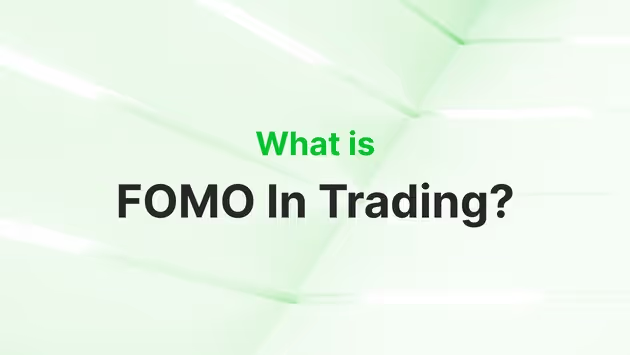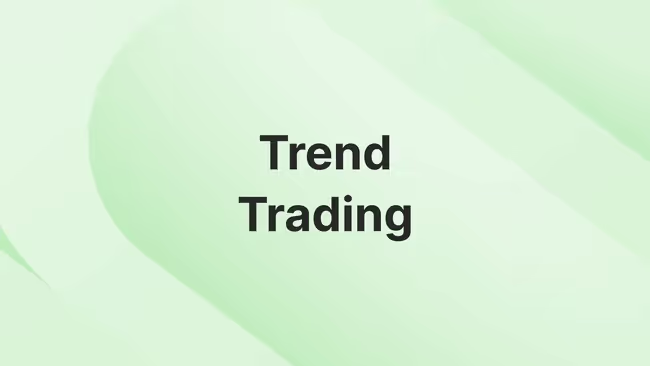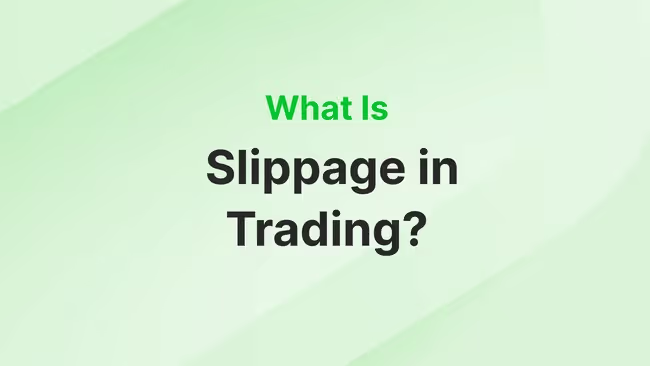Today, among the numerous trading instruments and a wide variety of types of electronic trading, trading with the help of contracts for difference (CFD) is gaining particular popularity. With wide advantages, this type of derivatives trading provides incredible opportunities for increasing personal capital. On the other hand, this type of trading has a number of interesting facts that few people know about.
This article will help you understand what CFD trading is, as well as what its main types are. In addition, you will learn 10 interesting facts about this popular type of derivative financial instrument.
[[aa-key-takeaways]]
Key Takeaways
- CFD trading is a speculative type of deriving profit on the rise or fall of the basic asset, which can be any trading instrument.
- CFD trading appeared in the UK in the 20th century, where shares of the stock market were used as a basic asset.
- Like futures, CFD contracts, regardless of the basic asset, have no expiration date.
What is CFD Trading?
CFD trading is a relatively new financial instrument. The first such contract was created in 1990 in London by a derivatives trading company, Smith New Court. Since then, CFD trading has experienced unheard-of growth. One of the main reasons for CFD’s appearance was the laws limiting the size of the margin leverage and the introduction of the stamp duty trading tax in England.
CFD trading is a marginal trading instrument, with the help of which one can profit from the change in the price of the underlying asset. The underlying asset for a CFD may be anything: stocks, futures, currencies, bonds, etc. The CFD trader also chooses the platform at his own discretion. CFD trading is ideal for those who want to trade but still need more funds. Such trading has a number of advantages over standard stock trading.
The main advantage of trading CFDs is the leverage. Thanks to the leverage and irrespective of the deposit size, a trader can open sufficiently large market positions and gain considerable profit even at the slightest fluctuation of prices on the assets market. To date, the leverage available for trading different CFD trading instruments is comparable only to the crypto market, where high leverage allows traders to trade derivatives like Bitcoin and Ether, or the Forex market, where absolutely all brokers multiply the initial deposit of traders by several times.
One of the most essential features of this type of derivative is that the total amount of liabilities on it is not connected with the total amount of an underlying asset circulating in the market. That is, the total number of CFD contracts on shares of a particular company may be numerous times greater than the number of issued shares.
[[aa-fast-fact]]
Fast Fact
Today, the most popular CFDs are contracts on crypto assets.
[[/a]]
10 Interesting Facts About CFD Trading
CFD trading has gained wide popularity among both private and institutional investors. Due to the many advantages of CFDs, which are undeniable in comparison to other types of trading, CFDs have become one of the widely used trading styles for diversifying investments and also for obtaining fast profits due to the manipulative nature of this type of investment. In spite of all this, CFD trading has a number of interesting facts, the knowledge of which may not only surprise, but also encourage you to enter it on a regular basis.
Trading with Any Amount of Money
The CFD market, as a separate space with its own special characteristics, is an excellent place to start investing, because regardless of the trading instruments used, the size of the initial investment has no restrictions and does not serve as a basis for evaluating users for admission to trading in the financial markets. This nuance helps to start the practice of trading CFD instruments without having a lot of capital.
Both Long and Short Trading
All CFD providers, without exceptions, give access to a large list of trading instruments that can be traded in long and short positions. It means that market participants can make a profit with a correctly chosen trading strategy if preconditions for a certain financial instrument quotation go down. Even though such a possibility is not only a feature of the CFD market, it gives appreciable advantages for additional profit and, unlike other markets, where certain instruments are not available for short-trading, it allows diversifying risks to a considerable degree employing hedging.
Leverage
Trading CFDs involves the use of leverage, the amount of which may depend on a number of different factors, ranging from the size of the original deposit and ending with the individual characteristics of the trader’s trading. Since CFD is a derivative instrument, its peculiarities allow using 100 times leverage exceeding the initial capital amount, which, by the way, also increases risks, as in the case of other types of margin trading. Owing to the possibility of using borrowed funds, traders have an opportunity to multiply their investments for any trading instrument and in any trading strategy.
Trading Taxes
Trading CFD instruments is not taxed in the same way as stock trading. When buying a stock on the stock market, traders pay stamp duty, but in the case of CFDs there is no stamp duty. At the same time, both stock trading and CFD trading are subject to capital gains tax. Unobvious to many (even to experienced traders) but unchangeable is the fact that when trading CFD instruments, even losing trades incurred as a result of an incorrectly developed trading strategy may be taxed, which is of course a great disadvantage.
High CFD Markets Liquidity
As practice shows, commodity markets are among the least liquid when compared to, for example, the stock market or the Forex market, but CFD, futures, or ETF (Exchange Traded Funds), as a rule, provide sufficiently good liquidity. The most liquid markets for CFD trading are usually considered to be the cryptocurrency market, which is accessible for all CFD brokers. Since liquidity is of paramount importance for a smooth trading process, practically every CFD provider cooperates with several CFD liquidity providers to be able to ensure stability of quotes and prevent catastrophic losing trade.
No Stamp Duty
Stamp duty is a tax levied on the purchase of real estate and land, as well as on the purchase of stocks, bonds, and other investment instruments. It belongs to the category of duties and is levied by obligatory; in some instances, the use of state-made stamped paper paid much higher than its actual value or by placing a special stamp on plain paper purchased from the state. Since the first CFD contract appeared in the 20th century in Great Britain, where this fee was introduced for trading in securities, now this rule has been revised, making it possible to avoid paying it in some countries.
CFD Account
After registering a CFD trading account on the site of any CFD broker, trading participants get access to a wide range of financial markets to implement their trading strategy. As already mentioned, today there are numerous markets where it is possible to trade CFDs and there is no need to open a separate account for each category of assets. Whether trading in cryptocurrency assets, Forex currency pairs or ordinary stocks on the stock market, a CFD account on the CFD broker platform will allow you to trade comfortably in one place while having access to powerful tools for analytics and analysis of investment activities.
CFDs and Dividends
Investing in CFD shares provides the opportunity to receive dividends, even though the client does not become a company shareholder. On the ex-dividend date, starting from which investments in growth and reduction of shares without the right to receive another dividend are made, before the time when investments can be made, the amount of dividends is credited or debited to the account. If there is a growth operation (buy), the amount of dividends is credited. Otherwise, the dividend amount is written off.
Positions in index CFD are subject to possible dividend adjustments. Dividend adjustments apply when a position is overnighted from the previous trading day until the dividend payment date. For long positions, the dividend is adjusted and credited to the client’s account; for short positions, the dividend is adjusted and debited from the client’s account.
Expiration Time
One of the most important advantages of trading CFDs is that most CFDs do not expire. In other words, many CFDs do not have an expiration date. At the same time, some assets usually have expiration dates, so by trading CFDs, traders can close their positions at any time.
This is a huge advantage because market participants can enter into very long trades and not have to worry about them being closed due to expiration dates before traders are ready to do so themselves. However, there are times when a trade can be closed on a trader’s behalf, for example, if there are not enough funds in their account to maintain an open position.
CFD History
CFDs were originally developed in the early 1990s in London as a type of equity swap traded with leverage. In their early years, CFDs were mainly used by hedge funds and institutional traders to hedge their stocks on the London Stock Exchange, mainly because they required small margins. In addition, because the shares did not physically change hands, they avoided stamp duty in the United Kingdom.
The emergence of contracts for the difference was necessitated by the existence of laws limiting the amount of margin leverage and the introduction of a securities trading tax. Later, this trading instrument gained more opportunities and became actively used by traders for making deals. This method of making trades allows you not to pay securities trading tax because it does not involve the ownership of shares.
Major Groups of CFD Trading Instruments
Because CFDs are derivatives (from other assets), they can be created for almost any market. In fact, many CFD brokers give traders access to thousands of financial markets through a single CFD trading platform, where they can implement any trading strategy.
Currencies
The investor may buy a CFD (long position) to profit from a rise in the relevant currency pair, or sell a CFD (short position) to profit from a fall in the relevant currency pair. The price of the CFD is derived from the underlying currency pair, which can be either the current (“cash”) price or the forward (“forward”) price.
For example, suppose an investor holds a long position in a CFD on an underlying currency pair, and the price of that pair rises. In that case, the value of the CFD will increase, and at the end of the CFD contract term, the broker will pay the difference between the closing price and the initial value of the contract. A CFD linked to the futures price works similarly, except there is a predetermined expiration date when the contract is either automatically terminated or has to be rolled over to the next expiration date.
Shares
Many people have heard about the incredible growth of American companies, especially giants like Microsoft or Apple. Nevertheless, it used to be difficult to get on the NYSE and trade with these companies until CFD contracts came along.
CFD on stocks are contracts for difference, where securities are the underlying asset. In practice, trading such instruments is practically the same as trading real stock, with one small exception: a trader concludes a contract only as to the price, he is not given an asset to own. The purchase of CFDs is done in a standard broker’s terminal. For example, it can be MetaTrader 4 or a web platform working directly from the browser, but it is also based on the MT4 platform.
Stock Indices
Index trading is a popular way for traders to access financial markets without investing directly in individual companies’ stocks, bonds, commodities, or other assets. Traders who are unfamiliar with financial markets often start with index trading. Simply put, they trade index-tracking funds or stock baskets instead of buying and selling securities individually. By tracking the behavior of a large group of stocks, a stock index reflects the health of a broader market, such as a country’s stock market or a specific sector. This means that indices are diversified. In turn, trading CFDs on indices allows you to increase your profits using leverage.
Crypto
Cryptocurrency CFDs are derivatives that allow traders to speculate on cryptocurrencies without becoming direct owners of the basic asset. Cryptocurrencies are traded in tandem with conventional currencies. For example, Ethereum, one of the best-known cryptocurrencies, trades in pairs with the U.S. dollar (ETHUSD). One of the peculiarities of trading cryptocurrency CFDs is that there is no need to have an account at a cryptocurrency exchange to trade because the CFD broker is responsible for providing the price of any cryptocurrency from the most reliable exchanges and the futures prices for these cryptocurrencies.
Conclusion
CFD Trading continues to grow in popularity, offering even the most demanding traders a wide range of trading instruments to implement the most daring trading strategies. Having similarities to futures, but at the same time unique qualities, CFD trading gives you a chance to start increasing your capital even with a minimal deposit and without any experience in global markets.





.svg)





